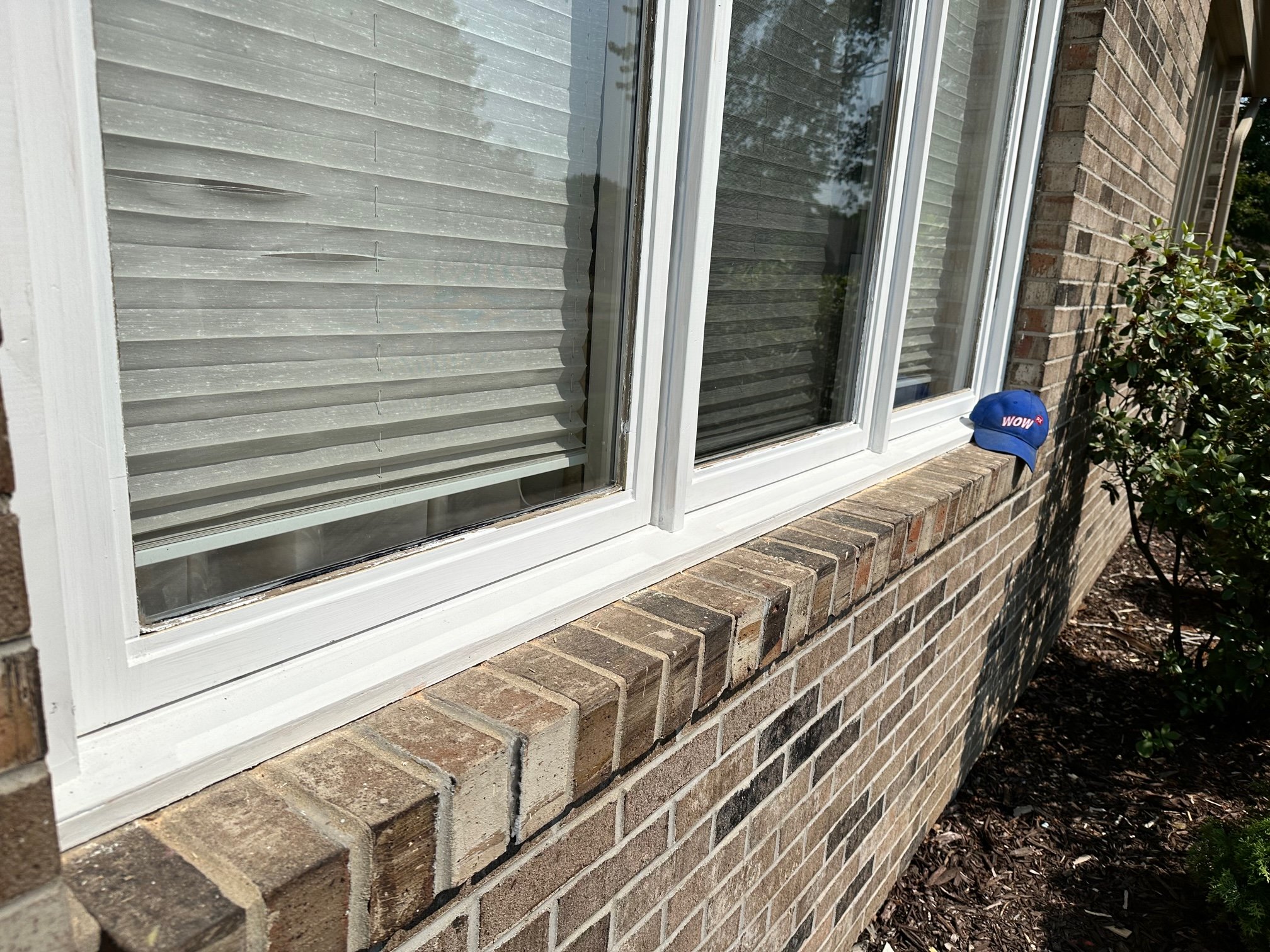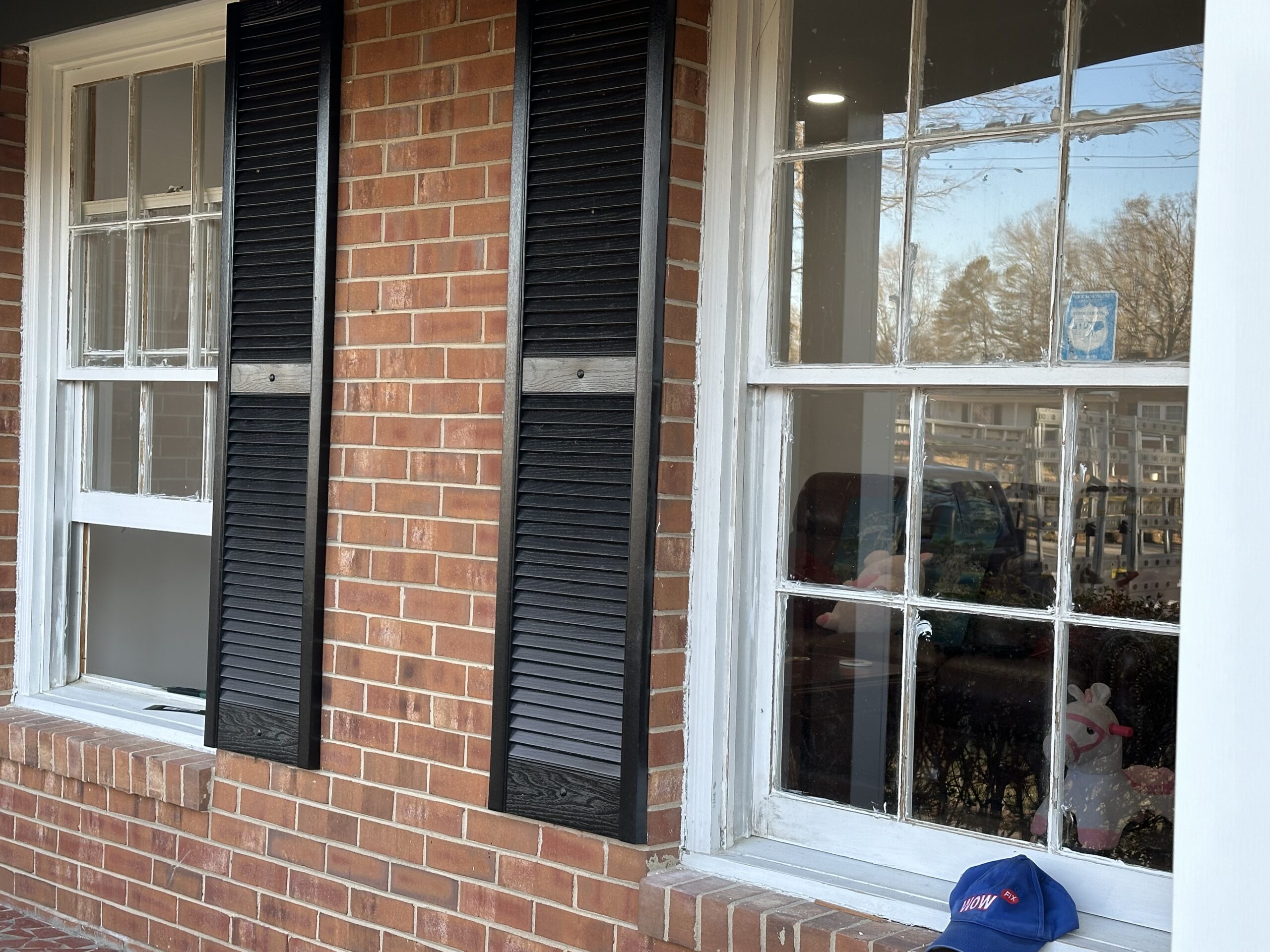door Replacement in cary, NC
Discover the truth about door replacement in Cary and enjoy guaranteed satisfaction. Say goodbye to outdated doors and hello to a refreshed look.
door Replacement in cary NC
Looking for a door replacement in Cary, North Carolina? This is where your search ends—at Wowfix! Our dedicated team does a fantastic job at offering commercial establishments premium door replacement services. Whether you need the glass replaced or the seals fixed, you can rely on us to make your door seem and feel better. Wowfix is a reliable source for meticulous repairs that breathe new life into your doors.
or Request Call Back
If you would like to request a call back for window or door repair service, please provide the following information:
door Replacement in cary NC
Looking for a replacement door in Cary, North Carolina? The place to end your search is Wowfix! Our area of expertise is offering organizations first-rate door replacement services. You can be sure that we’re dedicated to enhancing the functionality and look of your doors, whether that means changing out damaged glass or addressing seal issues. You can rely on Wowfix to provide you with solutions that will accurately and meticulously bring your doors back to life.
Our Work:












Visit wowfix Cary, NC:
Our Services:
Visit wowfix in cary NC:
Our Services:
Seeking a door enhancement in Cary? We provide installation, repair, and replacement services conveniently located near you.
Tailored to Every Budget and Design Preference door Replacement Near me in cary, NC
Any building’s doors are an essential component that affect the building’s usability and aesthetic appeal in Cary, North Carolina. Doors are important for both residential and commercial buildings, but with time, wear and tear can cause them to deteriorate. It’s crucial for property owners to check their doors on a regular basis and hire repair services when necessary.
Selecting Wowfix for your door replacement needs in Cary ensures that your doors will receive excellent care. We take great pride in our history of satisfying customers with window repairs, as seen by the constant good comments we receive. Situated close to Cary, we’re dedicated to provide top-notch service of custom replacement windows.
Common Reasons for door Replacement in Cary;

Doors may require repairs due to defects in manufacture or general wear and tear. Common issues include problems with the frame, hinges, threshold, and rotted regions. One of the issues that requires professional attention is the corrosion of door fittings.
Issues such as improperly placed door thresholds, rotten or warped wood profiles, handles that are malfunctioning, locks on metal or plastic doors that are faulty, and doors that don’t seal properly must be addressed promptly. Quick consultation can help identify the problem and ensure efficient repairs using specialized equipment. Properly functioning doors are essential for insulation, energy efficiency, and enhancing the aesthetic appeal of your home.
In addition to door replacement in Cary, NC, we provide:
– Door Glass Replacement: We offer premium glass replacements for broken door panels, tailored to meet all requirements and customer preferences.
– Foggy Door Repair: Swiftly addressing any door issues is crucial for maintaining functionality. Our experts deliver top-notch repairs for foggy door concerns.
– Window Repair: If your windows aren’t performing as expected, our team can efficiently address any issues.
– Door Replacement: When a door replacement is necessary, our skilled craftsmen are here to assist with any concerns.
– Hardware Maintenance: Should you encounter any problems with your door systems, our company is prepared to offer top-notch repairs in Cary, North Carolina.
Choosing Wowfix for your door replacement requirements in Cary, NC, means selecting a service that prioritizes quality, excellence, and customer satisfaction. Our commitment to using premium materials and delivering exceptional service positions us as the leading choice for all your door repair and maintenance needs.
History of Windows and Doors Manufacturers of USA
 Pella Windows and Doors
Pella Windows and Doors
Pella Corporation is a renowned entity specializing in the design, manufacturing, and installation of doors and windows for both residential and commercial structures. Established in Pella, Iowa, in 1925, the company has built a distinguished reputation for its innovative approach, delivering superior craftsmanship, and maintaining meticulous standards. Pella offers a diverse range of products, including patio doors, entry door systems, and windows crafted from wood, fiberglass, and vinyl, catering to various design preferences. Their product lineup is designed to meet both budgetary constraints and energy efficiency standards.
Pella has garnered acclaim for its dedication to sustainability and energy conservation, ensuring that a significant portion of its products either meet or surpass ENERGY STAR certification criteria. The company’s extensive network of showrooms and knowledgeable advisors underscores its commitment to providing exemplary customer service, offering tailored solutions and guidance to meet individual needs and preferences.
 Andersen Windows and Doors
Andersen Windows and Doors
Andersen Corporation, a known company that specializes in manufacturing windows and doors was established in 1903 by Hans Andersen, a Danish immigrant and his family, in Hudson, Wisconsin. Currently based in Bayport, Minnesota Andersen has become one of the leading window and door manufacturers in North America. The company is recognized for its top notch products that blend design with state of the art materials to provide longevity, energy efficiency and visual appeal.
Offering a selection of window and door options such as casement windows, hung windows, gliding windows, bay and bow windows picture windows, specialty windows, patio doors and entry doors. These products come in materials like wood, Fibrex®) vinyl aluminum fiberglass to cater to different preferences performance needs budget constraints.
Moreover Andersen is dedicated to sustainability responsibility with many of its offerings meeting the energy efficiency standards set by ENERGY STAR program. The companys focus on excellence innovation customer satisfaction has garnered it a following, among homeowners builders architects alike.
 Marvin Windows and Doors
Marvin Windows and Doors
Reputable for creating high-quality windows and doors, Marvin stands out for its unwavering dedication to quality, skilled workmanship, and creative methods. Established as a family-run business in Warroad, Minnesota, in 1912, Marvin has grown to become a prominent player in the sector, providing a wide array of custom-made goods to satisfy the various demands of builders, architects, and homeowners.
Within Marvins product lineup are a variety of windows and doors in different styles, materials and configurations. Their range spans from wood windows to state of the art fiberglass. Extruded aluminum offerings under brands like Marvin Signature, Marvin Elevate and Marvin Essential. These collections are crafted to appeal to tastes, performance needs and budget considerations.
A standout feature of Marvins products is their emphasis on design versatility, energy efficiency and longevity. The company dedicates resources to research and development to integrate cutting edge technologies and sustainable methods into their manufacturing processes. Many of Marvins products carry ENERGY STAR certification as a testament to their effectiveness in conserving energy and minimizing impact.
Marvin is also recognized for its customer care services that extend support to both homeowners and industry professionals. They offer guidance and assistance in selecting the windows and doors for installation well as maintenance tips, for long term satisfaction.
The company has received awards. Has a strong following of loyal customers, in the United States and beyond thanks to its commitment, to excellence and creativity.
 Jeld-Wen Windows and Doors
Jeld-Wen Windows and Doors
JELD WEN stands out as a player, in the market for crafting windows, doors and associated items that elevate the aesthetics and utility of both residential and commercial spaces. Established back in 1960 by Richard Wendt and a group of four entrepreneurs in Klamath Falls, Oregon JELD WEN originated as a millwork facility with 15 staff members. Through the years it has evolved into an enterprise operating production and distribution sites across the United States and worldwide.
The array of offerings from JELD WEN encompasses a selection of window types like hung, casement, awning, sliding, bay, bow and fixed windows alongside patio doors, exterior doors and interior doors. These products come in materials such, as wood, vinyl and aluminum to cater to architectural designs, performance needs and budget constraints.
At JELD WENs core are values of innovation, sustainability and energy efficiency. Many of its creations are crafted to meet or surpass energy efficiency benchmarks to help heating and cooling expenses while reducing footprints.
The company is dedicated to manufacturing methods, such, as using recycled materials and adopting procedures that minimize waste and energy usage.
JELD WEN has built a reputation among homeowners, builders and architects due to its focus, on quality, customer service and innovation. The company is constantly growing its range of products and market presence to offer solutions that cater to changing customer needs while upholding standards of excellence and sustainability.
types of windows and doors we work on:
Cary Customer Testimonials: Read what our pleased clients in Cary have to say about their door replacement and window replacement experiences from WOWFIX.

 Double Hung Windows
Double Hung Windows
Double hung windows stand out as a top choice among homeowners, boasting a timeless aesthetic, flexibility, and straightforward maintenance. Comprising two movable sections known as sashes, they slide effortlessly within the frame, allowing for both upward and downward movement. This design feature enables convenient ventilation options, as both the upper and lower sashes can be opened. Here's a breakdown of their key attributes and advantages:
**Key Features:**
1. **Dual Opening Sashes:** Offering versatile ventilation, double-hung windows facilitate airflow through both the upper and lower sections.
2. **Tilt-in Design:** Many contemporary double-hung windows feature tilt-in sashes, simplifying exterior glass cleaning from indoors.
3. **Security and Insulation:** Equipped with locks and tight seals, these windows prioritize security and enhance energy efficiency.
4. **Customization:** Available in various materials such as wood, vinyl, metal, and fiberglass, double-hung windows offer customization options to align with any home decor. Colors, coatings, and hardware can be tailored to suit individual preferences.
**Advantages:**
1. **Versatile Ventilation:** By opening both sashes, double-hung windows facilitate the expulsion of warm air from the top while welcoming cool air from below, allowing for adaptable ventilation.
2. **Energy Efficiency:** The inherent design of double-hung windows promotes energy efficiency, which translates to lower utility costs over time.
With their blend of versatility, functionality, and aesthetic appeal, double-hung windows seamlessly integrate into any residence. Whether you're renovating an existing property or embarking on new construction, these windows offer the comfort, style, and performance you seek.
 Single Hung Windows
Single Hung Windows
Single-hung windows represent a classic and widely embraced style appreciated for its practicality. While resembling double-hung windows in appearance, they feature distinct characteristics, making them a favored choice for many households. Here's an overview of their traits and benefits:
**Characteristics:**
1. **Stationary Upper Sash:** Single-hung windows consist of two sashes, with the lower sash being adjustable for opening, while the upper sash remains fixed and immobile.
2. **Ventilation:** Airflow and ventilation are facilitated through the adjustable lower sash.
3. **Locks and Seals:** Similar to double-hung windows, single-hung windows are typically equipped with locks and tight seals to enhance safety and energy efficiency.
4. **Customization Options:** These windows are available in various materials such as vinyl, wood, fiberglass, and aluminum. Additionally, they offer customization options including colors, finishes, and hardware to complement the home's style.
**Advantages:**
1. **Affordability:** Single-hung windows are generally more budget-friendly due to their straightforward design structure.
2. **Energy Efficiency:** With only one movable sash, single-hung windows experience fewer air leaks compared to double-hung windows, resulting in improved energy efficiency.
3. **Easy Installation:** Their simple design facilitates a quick installation process, reducing labor costs.
4. **Timeless Aesthetic:** Single-hung windows boast a classic appearance that blends well with various architectural styles, particularly in traditional and historic homes.
5. **Security:** The fixed upper sash adds a layer of security by limiting entry points to the lower sash, enhancing safety.
While single-hung windows may not offer the same ventilation flexibility as double-hung windows, their affordability, energy efficiency, and timeless appeal make them a popular choice among homeowners. They are particularly well-suited for locations where accessing the upper window sash is challenging or where extensive ventilation is not a primary concern.
 Horizontal Sliding Window
Horizontal Sliding Window
Households frequently opt for horizontal slider windows, also known as glider or sliding windows, due to their chic appearance and practicality. These windows feature movable sashes that effortlessly slide horizontally along a track within the frame, offering easy operation. Below are some notable features and advantages of slider windows:
**Key Features:**
- **Operable Sashes:** Depending on the design, one or both sashes can slide horizontally to open, providing flexibility in ventilation and access.
- **Tracks and Rollers:** Sliding windows in my area are equipped with tracks and rollers to ensure smooth functionality.
- **Locks and Seals:** They typically come with locking mechanisms and tight seals for security and energy efficiency.
- **Customization Options:** Horizontal slider windows in Cary, NC are available in various materials such as vinyl, aluminum, wood, and fiberglass. They can be customized with colors, finishes, and hardware to suit any style.
**Benefits:**
- **Space-Saving Design:** Their sliding mechanism eliminates the need for extra space inside or outside for efficient operation, making them perfect for areas with limited space like next to patios or walkways.
- **Easy Operation:** Sliding windows are convenient to open and close, even in hard-to-reach spots like above kitchen sinks or countertops.
- **Natural Light and Fresh Air:** Larger sliding windows bring in plenty of natural light and fresh air, improving the room's comfort and atmosphere.
- **Energy Efficiency:** Modern sliding windows focus on energy efficiency by incorporating features such as low-E glass, argon gas fills, and insulated frames to help reduce energy expenses.
- **Expansive Views:** Horizontal slider windows near me are often designed with large glass areas, providing expansive views of the outside world.
Horizontal slider windows offer a practical option for any home, combining style, functionality, and energy efficiency. Their user-friendly design and space-saving qualities make them a sought-after choice for constructions or home upgrades.
 Casement Window
Casement Window
Due to their outward-opening design reminiscent of a door, casement windows enjoy widespread popularity. Typically featuring side hinges that swing out to the left or right, though some can also open inward, these windows offer ventilation, energy efficiency, and user-friendly operation. Let's delve into the exceptional qualities and benefits of casement windows:
**Noteworthy Attributes:**
1. **Hinged Attachment:** Casement windows in Cary, NC are affixed to their frames via hinges positioned on the side, top, or bottom.
2. **Crank Mechanism:** They are commonly operated using a crank system, ensuring effortless opening and closing.
3. **Seal and Security:** When closed, casement windows create a tight seal as the window sash securely presses against the frame, boosting energy efficiency. Additionally, they come equipped with built-in locks for enhanced safety.
4. **Customization Possibilities:** Available in a variety of materials such as wood, vinyl, aluminum, and fiberglass, nearby casement windows offer customization options including colors, finishes, and hardware to complement any architectural design.
**Benefits:**
1. **Great Air Circulation:** Casement windows are designed to open fully, facilitating top-to-bottom ventilation and the capture of refreshing breezes indoors.
2. **Energy Savings:** Thanks to the tight seal between the window sash and frame when closed, casement windows excel in energy efficiency, assisting in reducing heating and cooling expenses.
3. **Panoramic Views:** Often featuring expansive glass panels, casement windows provide views of the surroundings, maximizing the intake of natural light.
4. **Adaptability:** Versatile enough to suit designs ranging from classic to modern, casement windows can be employed in various areas and decors.
5. **User-Friendly Design:** The use of a crank mechanism makes operating casement windows simple and convenient, particularly advantageous for locations that are difficult to reach, such as above kitchen sinks or in bathrooms.
Casement windows nearby present an appealing option for homeowners seeking a combination of practicality, energy efficiency, and aesthetic appeal. Their ease of operation and ability to seal tightly upon closure render them a favored choice for many.
 Awning Windows
Awning Windows
Awning windows are notable for their hinged design, enabling them to open outward from the bottom, resembling an awning when in use. Operated with a crank, lever, or push-out mechanism, these windows offer versatility and convenience. One significant advantage of awning windows is their capability to provide ventilation even during light rain. Let's delve into some of the features and benefits of awning windows:
Key Features;
Top Hinged Design; Awning windows near me have hinges positioned at the top enabling them to open from the bottom.
Push Out Operation; They can be easily opened and closed using either a crank or push out mechanism.
Weatherproof Seal; When shut awning windows create a seal, against elements improving energy efficiency.
Customization Options; Available in various materials, like wood, vinyl, aluminum and fiberglass awning windows can be personalized with different colors, finishes and hardware to complement any architectural style.Benefits;
Ventilation, in All Weather; Awning windows create a breeze during days allowing fresh air to flow without any water getting inside.
Energy Efficiency; When shut, the tight seal between the sash and frame of windows helps conserve energy leading to heating and cooling expenses.
Versatile Placement; With their size and easy operation awning windows can be installed in areas like above doors beside other windows or in bathrooms and kitchens.
Enhanced Security; The unique opening mechanism of windows makes them harder to open from outside adding a layer of security to your home.
Maximizes Natural Light; The design of windows often includes glass panels that offer clear views of the outdoors and bring in ample natural light.
Awning windows in Cary, NC are an option for homeowners seeking both functionality and style. Their ability to maintain ventilation when its raining, energy features and flexibility in placement make them a favored choice, across various architectural styles.
 Picture Windows
Picture Windows
Large picture windows are crafted to provide expansive views of the outdoors and allow ample natural light into a room. Unlike windows that can be opened and closed, picture windows remain shut, enhancing energy efficiency by avoiding air leaks from moving parts. Here are some notable characteristics and advantages of picture windows:
**Characteristics:**
- **Fixed Structure:** Picture windows near me feature a design that contributes to their simple appearance, as they do not open or close.
- **Expansive Glass Surface:** They typically consist of a single glass panel, without dividers or interruptions, maximizing both the outside view and the sunlight entering the room.
- **Customization Choices:** Picture windows in Cary, NC come in various shapes and sizes to suit architectural requirements. They can be framed with materials like wood, vinyl, aluminum, or fiberglass. Additionally, they can be combined with other window types (such as casement or awning windows) for ventilation purposes.
- **Energy Efficiency:** Due to their sealed nature without any openings, picture windows tend to be more energy-efficient than operable windows. This is especially true when they are equipped with energy-efficient glass options, such as low-E coatings and argon gas fills.
**Advantages:**
- **Views:** Picture windows offer sweeping views of the surrounding scenery, perfect for showcasing landscapes, gardens, or other picturesque sights.
- **Natural Illumination:** The generous glass area allows plenty of natural light to flood into the room, creating a bright and inviting atmosphere and potentially reducing the need for artificial lighting during daylight hours.
- **Visual Appeal:** With their simple and elegant design, picture windows can complement various architectural styles, adding a touch of modern elegance to any room.
- **Flexibility:** They are suitable for spaces like living rooms, dining areas, bedrooms, and hallways where enhanced natural light or a focal point is desired.
- **Easy Upkeep:** Since they have no moving parts, picture windows require minimal maintenance compared to operable windows. This makes them a practical choice for areas that are hard to access.
Picture windows near me are an ideal option for homeowners looking to establish a seamless connection between their indoor and outdoor spaces. Their ability to frame and emphasize the beauty of the surroundings, coupled with their energy efficiency and aesthetic adaptability, has made them a favored selection in design and remodeling endeavors.
 Sliding Glass Doors
Sliding Glass Doors
Sliding glass doors have become a sought-after feature that seamlessly connects indoor and outdoor spaces while blending charm with utility. These doors grant access to patios, decks, and gardens, crafted with glass panels that slide horizontally on tracks to open and close. Here are a few characteristics and benefits of sliding glass doors:
**Characteristics:**
- **Expansive Glass Panels:** The defining feature of sliding glass doors is their large glass panels, maximizing natural light and providing unobstructed views of the outside.
- **Horizontal Sliding Mechanism:** These doors move along tracks horizontally, with one panel sliding while the other remains stationary, saving space compared to swinging doors.
- **Energy Efficiency Options:** Many contemporary sliding glass doors near me incorporate energy-efficient elements such as triple-pane glass, low-E coatings, and argon gas fills to minimize heat exchange and reduce energy expenses.
- **Customization Possibilities:** Sliding glass doors can be customized in various sizes, designs, and frame materials such as vinyl, aluminum, wood, and fiberglass to complement architectural styles.
- **Security Enhancements:** Enhanced locking systems, impact-resistant glass options, and choices for integrated security bars or screens enhance the safety features of sliding glass doors.
**Advantages:**
- **Smooth Indoor-Outdoor Connection:** Sliding glass doors in Cary, NC create a seamless link between inside and outside areas, improving the living experience and expanding entertainment spaces.
- **Sunlight and Scenery:** The large glass panels allow plenty of natural light and beautiful views, resulting in a bright and open atmosphere in the house.
- **Space-Efficient Design:** With doors that slide along the wall, there's no need for extra space for opening and closing, making them perfect for rooms with limited space.
- **Air Circulation:** Sliding glass doors in Cary can be opened partially or fully to adjust ventilation, bringing fresh air into the house and enhancing air quality.
- **Enhanced Property Value:** The appealing look and practicality of sliding glass doors can boost the worth of a property, making it more appealing to buyers.
Sliding glass doors near me offer homeowners a convenient option to combine coziness with outdoor living. Their ability to bring in light, views, easy access to outdoor areas, energy-efficient features, and customization possibilities make them a popular choice in contemporary home design.
 Swinging Doors
Swinging Doors
Swinging doors, also called doors are a timeless and used type of door that swings open or shut on hinges attached to the door frame. These doors can swing inwards or outwards depending on space and practical needs. They are adaptable and suitable, for use in settings like homes, offices and industrial spaces. Lets explore some characteristics and advantages of swinging doors;
Characteristics;
Swinging doors are hinged on one side, which allows them to swing outward. Depending on the size and weight of the door, different numbers of hinges may be used.
Single or Double Door Choices; They can be crafted as doors for entries or as double doors (like French doors) for broader openings enhancing convenience and visual appeal.
Material Selection; Swinging doors come in an array of materials such as wood, metal, glass, fiberglass and composite materials to suit style preferences and functional requirements.
Customization Options; These doors provide customization possibilities in terms of size, design, color, finish and hardware details (, like knobs, locks and decorative features) allowing them to harmonize with architectural styles.
Security Features; Swinging doors can come with locking systems, reinforced frames and durable materials to improve security and longevity.
Advantages;
Swinging doors are accessible to people of all ages and abilities due to their ease of operation.
Flexible Design: Their ageless style may be tailored to fit any aesthetic taste and matches both traditional and modern designs.
Effective Air Circulation: Swinging doors that fully open provide ventilation and airflow, which improve the quality of the air.
Natural Lighting: Spinning doors with glass panels can let in a lot of light, which makes a space feel cozy.
Space Division: Swinging doors provide for smooth transitions between rooms and are ideal for designating distinct spaces inside a building or home.
Swinging doors offer an option that combines practicality with design versatility for diverse applications. Whether serving as an entryway to a home a stylish transition between spaces or a secure access point, for an establishment swinging doors provide a fusion of functionality and aesthetic charm that can elevate any environment.
Don’t let damaged doors affect your Cary property. Reach out to WOWFIX – your trusted experts for Door replacement in Cary, NC.
Questions and answers:
Still have some questions? Here are answers to some frequently asked questions about our door replacement processes:
Since we are a local business, we can send out our Cary specialists for the majority of common replacement in less than a day. You can reach emergency services by phoning our hotline around-the-clock.
For all finished door replacement, we provide a labor warranty of at least 12 months. Any replacement components installed by our specialists are covered by their manufacturers' warranties.
Yes, we specialize in maintaining historic homes' original antique wood windows in accordance with preservation guidelines. We try not to replace anything whenever we can.
Correct repairs increase energy efficiency by preventing moisture entry, reducing drafts, and improving seals. New replacement doors, however, optimize energy savings.
For your convenience, we accept all major credit cards, checks, and cash.
Yes, our technicians are experienced in repairing windows and doors from all major brands including Marvin, Simonton, Pella, Andersen, Milgard, Jeld-Wen, Caradco and many more.
Contact WOWFIX in Cary Today: For the best door replacement services in Cary, NC, choose WOWFIX. Contact us now for a free consultation and estimate, and let us enhance the doors of your Cary home or business.
or Request Call Back
If you would like to request a call back for window or door repair service, please provide the following information:
Contact us:
Wowfix – Window and Door Replacement in Cary
1006 S Lindell Rd, Cary, NC 27403
(855)994-1801
We open 24/7 for Emergency Calls

